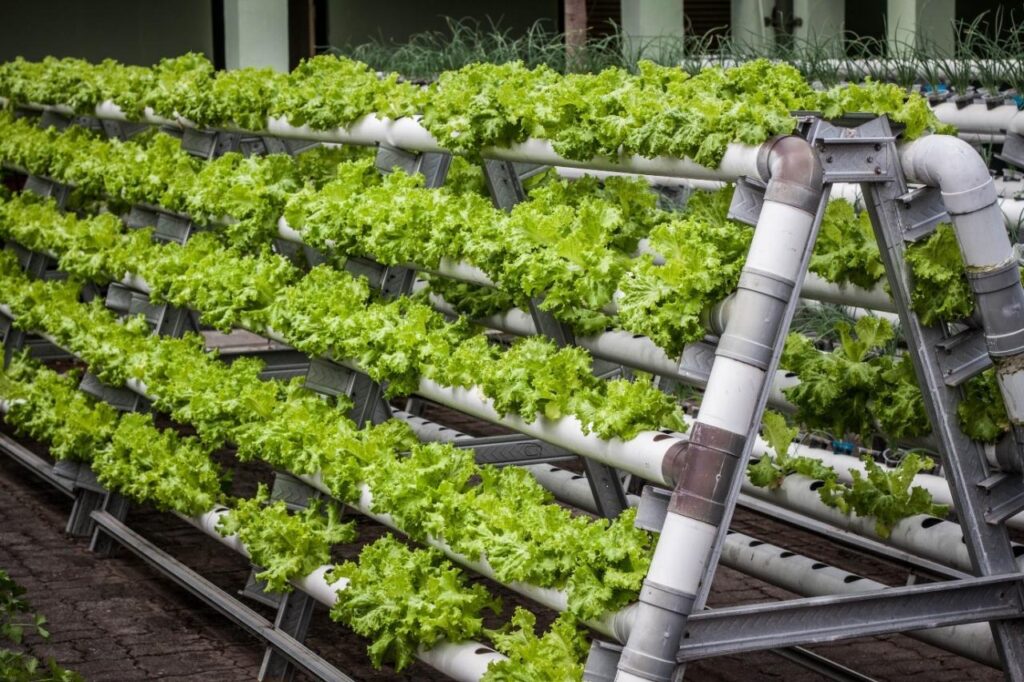As global populations continue to grow and urban centers become more densely packed, the traditional methods of agriculture are becoming increasingly unsustainable. Conventional farming, with its vast land requirements, immense water consumption, and long-distance supply chains, is ill-equipped to meet the food demands of the future. A revolutionary solution is emerging from the heart of our cities: vertical farming. This innovative agricultural practice involves growing crops in vertically stacked layers, often within controlled-environment buildings. It represents a paradigm shift from rural, land-intensive farming to urban, technology-driven food production. This article will delve into the core concepts, technological innovations, and transformative benefits of vertical farming. We will explore how it’s poised to revolutionize our food systems, address critical environmental challenges, and fundamentally reshape the relationship between cities and their food supply.
The Core Concept

Vertical farming is about maximizing output in a minimal footprint. Instead of a single layer of crops spread across acres of land, plants are grown in towering racks, often in urban warehouses, shipping containers, or even within skyscrapers. This is made possible by a combination of advanced technologies that create the perfect growing environment.
A. Controlled Environment Agriculture (CEA): Vertical farms are a form of Controlled Environment Agriculture. The growing conditions—including light, temperature, humidity, and CO2 levels—are meticulously controlled and optimized for each specific crop. This eliminates the unpredictability of outdoor farming, allowing for consistent yields and a predictable harvest schedule.
B. Hydroponics, Aeroponics, and Aquaponics: These soilless growing methods are the foundation of vertical farming.
- Hydroponics: Plants are grown with their roots submerged in a nutrient-rich water solution. This method uses up to 95% less water than traditional farming because the water is continuously recycled.
- Aeroponics: This method uses even less water. The plant roots are suspended in the air and are misted with a nutrient solution. It’s an incredibly efficient way to deliver nutrients directly to the plant’s roots.
- Aquaponics: This is a symbiotic system that combines hydroponics with aquaculture (raising fish). The fish waste provides nutrients for the plants, and the plants purify the water for the fish, creating a closed-loop, sustainable ecosystem.
C. The Role of Artificial Lighting: Since vertical farms often exist in windowless buildings, they rely on artificial light to mimic the sun. LED lighting is the technology of choice. LEDs can be tuned to specific light spectrums (e.g., blue and red) that are most effective for photosynthesis, optimizing plant growth and energy efficiency. The use of specialized LED spectrums also allows for faster growth and higher yields compared to traditional lighting.
The Transformative Benefits of Vertical Farming
Vertical farming isn’t just a different way of growing food; it’s a solution to some of the most pressing issues facing our planet. The benefits are wide-ranging, from environmental conservation to enhanced food security.
A. Radical Reduction in Land Use: A key benefit is the radical reduction in the land required for agriculture. A single indoor acre can produce the equivalent of hundreds of outdoor acres of crops, freeing up valuable land for reforestation, natural habitats, or urban development. This is a game-changer for cities struggling with population growth and land scarcity.
B. Massive Water Savings: Traditional agriculture consumes an enormous amount of freshwater. Vertical farms use a closed-loop system where water is recaptured and recycled, leading to a reduction in water consumption of up to 95% or more. This is critical in a world where water scarcity is a growing crisis.
C. Elimination of Pesticides and Herbicides: Since vertical farms are controlled indoor environments, they are largely protected from pests and diseases. This eliminates the need for harmful chemical pesticides and herbicides, resulting in cleaner, safer food for consumers and a healthier environment.
D. Hyper-Local Food Production: Vertical farms can be located directly within urban centers, just minutes from where the food will be consumed. This drastically reduces the distance food has to travel from farm to fork, which has a number of benefits:
- Reduced Carbon Footprint: The “food miles” associated with transportation are virtually eliminated, leading to a massive reduction in fossil fuel consumption and carbon emissions.
- Fresher, More Nutritious Food: Since the food is harvested at its peak and delivered quickly, it retains more of its nutritional value and tastes better than food that has traveled long distances.
- Year-Round Availability: Vertical farms can grow crops 24/7, 365 days a year, regardless of the season or external weather conditions. This ensures a consistent supply of fresh produce.
E. Enhanced Food Security: By decentralizing food production and bringing it closer to population centers, vertical farming makes communities more resilient to supply chain disruptions caused by natural disasters, geopolitical events, or pandemics.
Overcoming the Challenges

Despite its immense promise, vertical farming is not without its challenges. The industry is still in its early stages and must overcome significant hurdles to achieve widespread adoption.
A. High Initial Capital Cost: Building a vertical farm requires a substantial upfront investment in technology, including lighting, environmental controls, and automated systems. This high capital cost can be a barrier for new entrants and can make it difficult for vertical farms to compete on price with traditional agriculture.
B. High Energy Consumption: While vertical farms are incredibly efficient in terms of land and water use, they are heavily reliant on electricity, particularly for LED lighting. Reducing this energy consumption and sourcing it from renewable sources is a major priority for the industry.
C. Crop Limitations: While a wide variety of leafy greens, herbs, and some fruits can be grown efficiently, the technology is not yet economically viable for all crops. Growing staple crops like wheat, rice, or corn in a vertical farm is currently not feasible due to the space and energy requirements.
D. Need for Technical Expertise: Running a vertical farm requires a different skill set than traditional farming. It’s a blend of agriculture, engineering, and data science. A deep understanding of automation, lighting spectrums, and nutrient solutions is essential for success.
The Future of Vertical Farming
The future of vertical farming is dynamic and full of innovation. As technology advances and economies of scale are achieved, the industry is poised for explosive growth and will play a central role in our future food systems.
A. Increased Automation and Robotics: The next generation of vertical farms will be even more automated. Robotics will handle everything from seeding and transplanting to harvesting and packaging. This will further reduce labor costs and increase efficiency, making vertical farms more competitive.
B. AI-Driven Optimization: Artificial intelligence and machine learning will be used to optimize every aspect of the growing process. AI can analyze data from sensors to make real-time adjustments to light, nutrients, and humidity, ensuring that crops grow at their optimal rate. This also allows for the discovery of new ways to improve plant health and increase yields.
C. Modular and Decentralized Systems: We will see the rise of smaller, more localized vertical farms in modular containers that can be placed in urban lots, on building rooftops, or in a community setting. This “farm-in-a-box” model will make fresh produce more accessible to underserved communities and will further reduce food miles.
D. Integration with Sustainable Energy: The industry’s reliance on electricity is a major focus. Vertical farms will increasingly integrate with on-site renewable energy sources like solar panels and wind turbines, moving closer to a truly self-sufficient and carbon-neutral model.
E. New Crop Varieties: Research and development will focus on adapting new crop varieties to the vertical farm environment. Scientists will work to create plants that are specifically bred for their ability to thrive in a controlled, indoor setting.
Conclusion
Vertical farming is not a temporary fix; it is a fundamental pillar of our future food system. It offers a powerful and elegant solution to some of the most pressing challenges of our time, from climate change and water scarcity to food security and urban densification. By bringing food production back into the city, we are creating a more resilient, sustainable, and equitable society. The benefits are clear: less land and water use, zero pesticides, and a hyper-local supply of fresh, nutritious food year-round.
While the industry still faces hurdles related to capital costs and energy consumption, the pace of technological innovation is accelerating. As automation, AI, and renewable energy become more integrated into the vertical farming model, it will become an increasingly viable and attractive solution. The future of vertical farming is about creating a food system that is smarter, cleaner, and more efficient. It’s a testament to human ingenuity and our ability to adapt and innovate in the face of immense challenges. The farms of tomorrow will be a beautiful fusion of nature and technology, and they will be found not just in fields but in the heart of our cities, nourishing our communities and helping to build a more sustainable world for generations to come.











